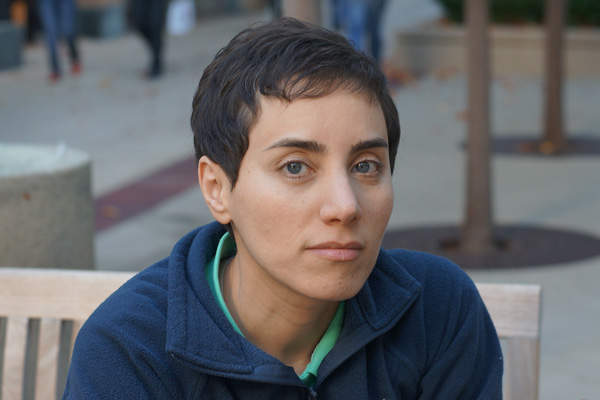
Mathematics, a notoriously male-dominated academic field, has witnessed its first female winner of the Fields Medal – an award viewed as the highest mark of honour a mathematician can receive, and often compared to the Nobel Prize.
Maryan Mirzakhani, currently a professor of mathematics at Stanford University, has made huge advances and contributions to the study of complex geometry. The prize specifically cites her work on “Riemann surfaces and their moduli spaces”, a field which explores the complicated structures and interconnections of dynamic objects and systems, modelled using imaginary numbers.
Established nearly 80 years ago, the Fields Medal – formally referred to as the International Medal for Outstanding Discoveries in Mathematics – aims to acknowledge the outstanding achievements of early career researchers in mathematics. It also intends to honour the promise of future mathematic achievement, and thus the winner is required to be less than 40 years.
During the ceremony in Seoul on Wednesday, Mirzakhani – who previously dreamed of becoming a writer – was praised for providing new mathematical insights for academic fields as diverse as geometry, topology and probability theory.
In an interview, Maryan Mirzakhani attempted to explain her research in accessible terms:
Most problems I work on are related to geometric structures on surfaces and their deformations. In particular, I am interested in understanding hyperbolic surfaces. Sometimes properties of a fixed hyperbolic surface can be better understood by studying the moduli space that parameterises all hyperbolic structures on a given topological surface. These moduli spaces have rich geometries themselves, and arise in natural and important ways in differential, hyperbolic, and algebraic geometry. There are also connections with theoretical physics, topology, and combinatorics. I find it fascinating that you can look at the same problem from different perspectives and approach it using different methods.”
The prestigous award ceremony takes place every four years and is known to be an indicator of the mathematicians whose work should be looked out for in the future. In addition to the medal, the winner is also awarded CAN$15,000 in cash (or roughly £8,180). This year’s award is particularly groundbreaking, not only because this is the first female winner since the prize was established back in 1936, but also because Mirzakhani is an Iranian native, and the prize is a reflection of the rise of outstanding achievements and contributions from mathematicians from developing countries.
Sir Tim Gowers, a Fields Medalist and mathematician from Cambridge University, told the Guardian:
Although women have contributed to mathematics at the highest level for a long time, this fact has not been visible to the general public. I hope that the existence of a female Fields medalist, who will surely be the first of many, will put to bed many myths about women and mathematics, and encourage more young women to think of mathematical research as a possible career.”
Mirzakhani was one of four mathematicians awarded the prize. The others were Artur Avila of the Institute of Mathematics of Jussieu, for his “profound contributions to dynamical systems theory”; Manjul Bhargava of Princeton University, for “developing powerful new methods in the geometry of numbers”; and Martin Hairer of the University of Warwick, for his “contributions to the theory of stochastic partial differential equations”.
Even though more than 40 per cent of mathematical science graduates are female, recent UK figures show that only around six per cent of women become professors of mathematics.
“I will be happy if it encourages young female scientists and mathematicians,” Mirzakhani said. “I am sure there will be many more women winning this kind of award in coming years.”





